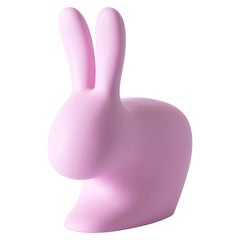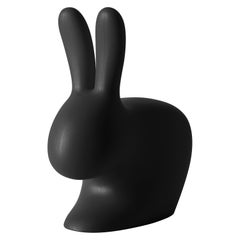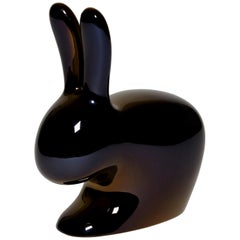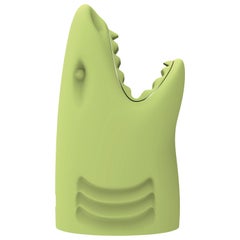Qeeboo Rabbit Chair
21st Century and Contemporary Italian Modern Chairs
Plastic
21st Century and Contemporary Italian Modern Chairs
Plastic
21st Century and Contemporary Italian Modern Chairs
Plastic
21st Century and Contemporary Italian Modern Chairs
Plastic
21st Century and Contemporary Italian Modern Paperweights
Plastic
People Also Browsed
2010s Stools
Metal
21st Century and Contemporary Chinese Modern Side Chairs
Metal
2010s Australian Scandinavian Modern Chairs
Sheepskin
21st Century and Contemporary Italian Modern Stools
Aluminum
2010s American Other Benches
Lambskin, Mohair, Acrylic, Lucite, Fabric, Rope
21st Century and Contemporary Italian Modern Chairs
Plastic
2010s Danish Scandinavian Modern Dining Room Chairs
Leather
2010s Finnish Modern Lounge Chairs
Fiberglass
Mid-20th Century Belgian Dining Room Chairs
Wood
2010s Italian Side Tables
Onyx
2010s South African Modern Chairs
Steel
21st Century and Contemporary Brazilian Modern Armchairs
Velvet
21st Century and Contemporary Italian Modern Floor Lamps
Plastic
21st Century and Contemporary Italian Modern Dining Room Chairs
Plastic
21st Century and Contemporary Italian Modern Rocking Chairs
Plastic
2010s Italian Modern Chairs
Plexiglass
Qeeboo Rabbit Chair For Sale on 1stDibs
How Much is a Qeeboo Rabbit Chair?
A Close Look at Modern Furniture
The late 19th and early 20th centuries saw sweeping social change and major scientific advances — both of which contributed to a new aesthetic: modernism. Rejecting the rigidity of Victorian artistic conventions, modernists sought a new means of expression. References to the natural world and ornate classical embellishments gave way to the sleek simplicity of the Machine Age. Architect Philip Johnson characterized the hallmarks of modernism as “machine-like simplicity, smoothness or surface [and] avoidance of ornament.”
Early practitioners of modernist design include the De Stijl (“The Style”) group, founded in the Netherlands in 1917, and the Bauhaus School, founded two years later in Germany.
Followers of both groups produced sleek, spare designs — many of which became icons of daily life in the 20th century. The modernists rejected both natural and historical references and relied primarily on industrial materials such as metal, glass, plywood, and, later, plastics. While Bauhaus principals Marcel Breuer and Ludwig Mies van der Rohe created furniture from mass-produced, chrome-plated steel, American visionaries like Charles and Ray Eames worked in materials as novel as molded plywood and fiberglass. Today, Breuer’s Wassily chair, Mies van der Rohe’s Barcelona chair — crafted with his romantic partner, designer Lilly Reich — and the Eames lounge chair are emblems of progressive design and vintage originals are prized cornerstones of collections.
It’s difficult to overstate the influence that modernism continues to wield over designers and architects — and equally difficult to overstate how revolutionary it was when it first appeared a century ago. But because modernist furniture designs are so simple, they can blend in seamlessly with just about any type of décor. Don’t overlook them.
Materials: Plastic Furniture
Arguably the world’s most ubiquitous man-made material, plastic has impacted nearly every industry. In contemporary spaces, new and vintage plastic furniture is quite popular and its use pairs well with a range of design styles.
From the Italian lighting artisans at Fontana Arte to venturesome Scandinavian modernists such as Verner Panton, who created groundbreaking interiors as much as he did seating — see his revolutionary Panton chair — to contemporary multidisciplinary artists like Faye Toogood, furniture designers have been pushing the boundaries of plastic forever.
When The Graduate's Mr. McGuire proclaimed, “There’s a great future in plastics,” it was more than a laugh line. The iconic quote is an allusion both to society’s reliance on and its love affair with plastic. Before the material became an integral part of our lives — used in everything from clothing to storage to beauty and beyond — people relied on earthly elements for manufacturing, a process as time-consuming as it was costly.
Soon after American inventor John Wesley Hyatt created celluloid, which could mimic luxury products like tortoiseshell and ivory, production hit fever pitch, and the floodgates opened for others to explore plastic’s full potential. The material altered the history of design — mid-century modern legends Charles and Ray Eames, Joe Colombo and Eero Saarinen regularly experimented with plastics in the development of tables and chairs, and today plastic furnishings and decorative objects are seen as often indoors as they are outside.
Find vintage plastic lounge chairs, outdoor furniture, lighting and more on 1stDibs.





























